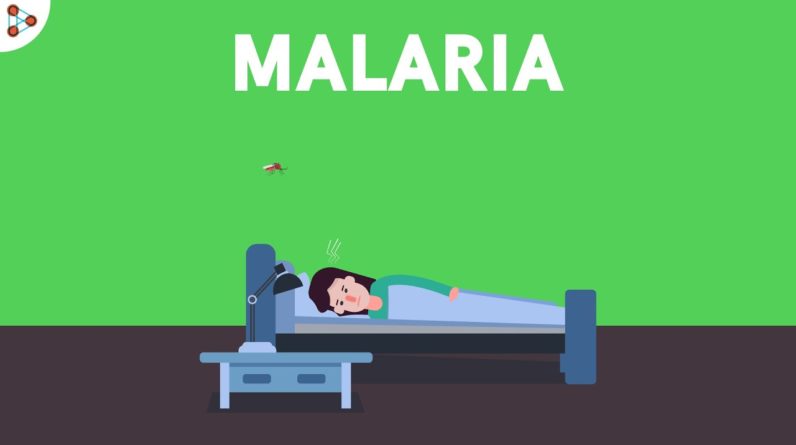
One fine day, after returning home from lectures,
Zara developed extremely high fever. Also, she had frequent severe chills and sweating
intermediately! What was really wrong with her? A few diagnostic tests revealed that Zara
was suffering from Malaria! Yes! And
now, she was given all the possible best treatments to recover as quickly as
possible! But how did she get infected with malaria
in the first place? What could have
caused it? And how did the infectious agent take over
her body? Let us learn this infectious disease in detail
in this video! To begin with, can you tell me, what causes
malaria? We have always heard….
Mosquito bites are the root cause of malaria. So are mosquitoes responsible for
this infection? Nope! You will be surprised to know that mosquitoes
do not cause malaria, but just spread it. And what do we mean by this? The actual causative agent of Malaria is the
protozoan called Plasmodium. Plasmodium vivax, Plasmodium malaria, Plasmodium
falciparum are a few species of Plasmodium that cause malaria in humans. Among these, Plasmodium
falciparum is the most violent, and can also be life-threatening. So from where
does a mosquito come into the picture? Well, the protozoan Plasmodium lives as
a parasite in the female Anopheles mosquito. From there, it gets transmitted to
humans with a mosquito bite. Hence, it is the infected mosquito BITE which
can cause malaria, and not the insect itself! Plasmodium (parasite) → Female Anopheles
mosquito → Transferred → Humans → mosquito bite
Thus, the complete life cycle of the malarial parasitic protozoa involves two hosts. First one is the female Anopheles mosquito
and the second one is the human host. Let us understand the complete life cycle
of the malarial parasite.
It all begins when an infected mosquito bites
a human. This helps transfer the
malarial parasite in the human body. In order to enjoy her blood meal, the female
Anopheles mosquito secretes her saliva into the human bloodstream to prevent
blood coagulation. It is with this
secretion, that the parasite gets a chance to enter the human body. The disease causing Plasmodium, gets transferred
from mosquitoes to humans in the form of sporozoites. Sporozoites is a stage in the life cycle of
Plasmodium.
At this particular stage they
are capable to cause an infection in the human body. And how do they do that? Once they enter the bloodstream of the humans
they eventually reach their target, that is the liver. Here, they attack the liver cells and stay
inside them for quite a long time. Here, they reproduce asexually, in order to
increase their number. After that, they release themselves back into
the bloodstream by bursting out the liver cells.

The form in which they are released into the bloodstream is known as merozoites. These merozoites now target the Red Blood
Cells, the RBCs. Now in the RBCs, the merozoites develop into
a ring like structure called Trophozoite. This form can have two fates. Most of the trophozoites begin with
asexual cycle to give rise to new merozoites. And this occurs exponentially. The
number of merozoites produced is too large for the RBCs to contain. Hence, they
are released out, with the bursting of the RBCs. The released merozoites can now
attack new RBCs and keep increasing their population exponentially.
The other
fate of the trophozoites is entering a sexual cycle. With this, the trophozoites give
rise to two different gametocytes. Gametocytes in simple terms are like the germ
cells of plasmodium. When a non-infected mosquito approaches the
infected human for a blood meal, then these gametocytes
quickly pass into the mosquito’s body with the sucked blood. Now here, in the mosquito’s body, both,
male and female gametocytes, which are like the germ cells, fuse to form a zygote.
That is, the fertilization of these
gametocytes results in the formation and development of zygote in the
mosquito’s gut..




